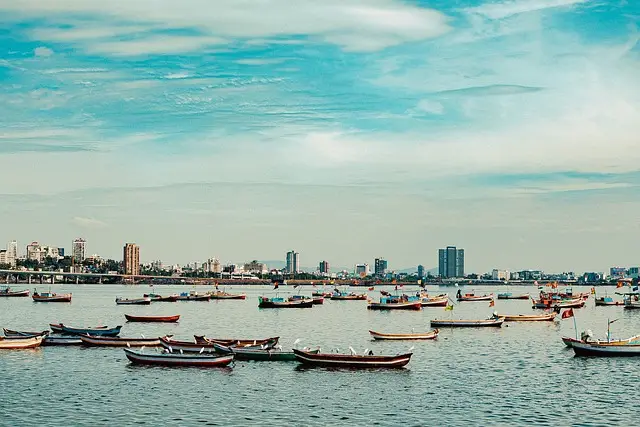When did Bombay change to Mumbai? This question often comes up among travelers, history lovers, and even locals. The name change from Bombay to Mumbai reflects India’s cultural identity and independence from its colonial past. Many people wonder about the reasons, the date, and the significance of this change. Here’s a detailed look at how and why this famous city’s name was changed.
History of the Name “Bombay”
The name “Bombay” has a long history. It originated from the Portuguese name “Bombaim,” which means “good bay.” When the British took over the area in the 17th century, they anglicized the name to “Bombay.” For centuries, the name represented the city as it grew into a major port and later into a bustling metropolis. Bombay became famous for its commercial strength, film industry, and diverse population.
Why Did Bombay Change to Mumbai?
So, when did Bombay change to Mumbai? The change happened officially in 1995, but the reasons behind it had been growing for years. The name “Mumbai” is rooted in the city’s native culture and religion. It comes from “Mumbadevi,” a local Hindu goddess worshiped by the Koli people, who were among the city’s original inhabitants. If you want a guest post service, click here
During British rule, many Indian cities were given anglicized names, often disregarding local languages and cultures. In the years after India’s independence in 1947, there was a movement to return to traditional names as a way to reconnect with India’s roots. This movement gained traction in Maharashtra, where the regional Marathi-speaking population wanted to honor their language and heritage.
The political party Shiv Sena, which had a strong regional identity, pushed for the name change. They argued that “Mumbai” was the original, authentic name and that “Bombay” symbolized colonial rule. In 1995, the Maharashtra government, led by Shiv Sena, officially changed the city’s name to Mumbai.
The Significance of the Change
The name change was more than just a switch of letters; it was symbolic. “Mumbai” represents the local Marathi culture and identity. The decision was about pride and self-assertion. For many locals, using “Mumbai” instead of “Bombay” felt like reclaiming a part of their heritage.
This name change also aligned with similar changes across India. Other cities, like Madras (now Chennai), Calcutta (now Kolkata), and Bangalore (now Bengaluru), also returned to names reflecting their native cultures. Each change served as a step toward shedding the remnants of colonial influence.
How the Name Change Impacted Daily Life
The name change brought a few practical changes. Official documents, signboards, and addresses had to be updated. Internationally, too, businesses and tourists adapted to calling the city “Mumbai.” However, some people, especially older generations, still use “Bombay” out of habit. In the film industry, “Bollywood,” a nickname for Mumbai’s movie industry, is a mix of “Bombay” and “Hollywood,” so the name “Bombay” still lingers in that context.
Over time, people embraced “Mumbai” as the official name, and the city continued to flourish. Today, the name “Mumbai” is recognized worldwide as a bustling center of culture, trade, and tourism.
What Was the Reaction?
The name change received mixed reactions. Many Marathi-speaking locals and regional political parties supported it, seeing it as a step toward honoring local culture. However, some residents and communities had grown attached to “Bombay” and saw the change as unnecessary. Internationally, the new name took time to catch on, but most people now refer to the city as Mumbai.
FAQs about the Name Change from Bombay to Mumbai
Q: When did Bombay officially change to Mumbai?
A: The name was officially changed to Mumbai in 1995 by the Maharashtra state government.
Q: Why was Bombay’s name changed to Mumbai?
A: The name was changed to honor the local Marathi culture and to shed the colonial association of the name “Bombay.” “Mumbai” comes from the goddess Mumbadevi, worshipped by the city’s original inhabitants.
Q: Who proposed the name change?
A: The Shiv Sena, a political party in Maharashtra, proposed and supported the name change as a way to promote regional pride.
Q: Do people still call it Bombay?
A: Yes, some locals and older residents still call it Bombay, either out of habit or affection. However, the official name is now Mumbai.
Q: Is “Bollywood” affected by the name change?
A: No, the term “Bollywood” remains popular despite the name change. It is a blend of “Bombay” and “Hollywood” and is widely recognized in the film industry.
Q: Are there other cities in India that changed names?
A: Yes, several Indian cities have changed names to reflect local languages and history. For example, Madras became Chennai, Calcutta became Kolkata, and Bangalore became Bengaluru.
Q: Is there a difference in pronunciation between Bombay and Mumbai?
A: Yes, there is a slight difference. “Bombay” is pronounced as “Bom-bay,” while “Mumbai” is pronounced “Mum-bye,” which aligns more with the Marathi language.
Q: Did the name change affect Mumbai’s economy or tourism?
A: The name change did not have a significant impact on Mumbai’s economy or tourism. The city remains a major financial hub and popular destination.
Conclusion
When did Bombay change to Mumbai? The answer is in 1995, but the story goes beyond just a date. The change from Bombay to Mumbai is a symbol of India’s journey toward reclaiming its cultural heritage. For the people of Mumbai, the new name represents pride, identity, and a connection to history. Today, whether you call it Bombay or Mumbai, the city remains vibrant, full of life, and a vital part of India’s soul. Click here to see Mumbai Indians vs Rajasthan Royals Match Scorecard.

